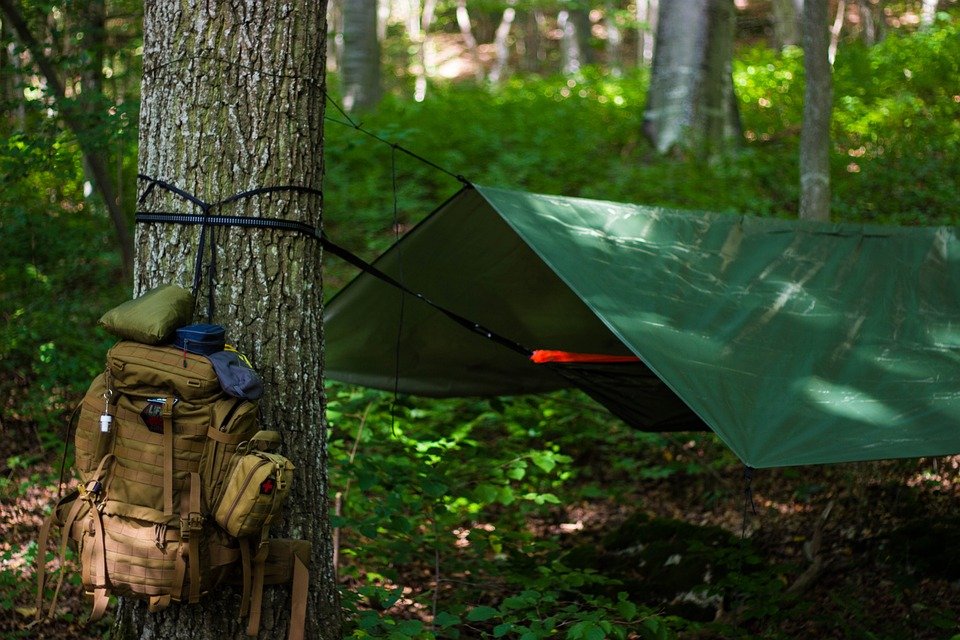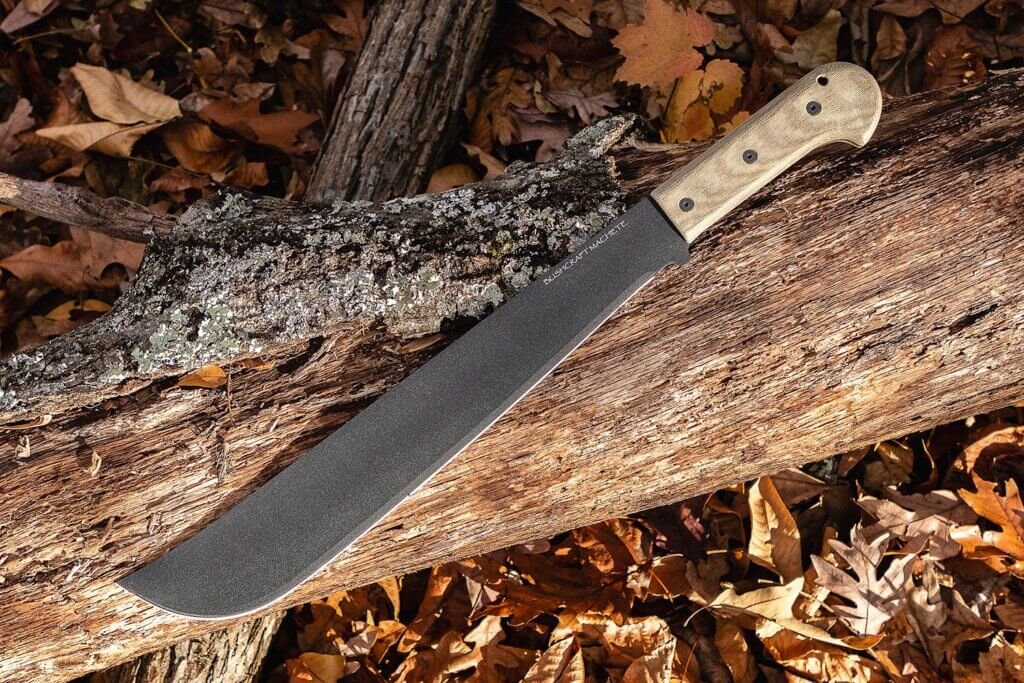
Do you enjoy Bushcraft? Here is 5 tips that will help you on your next adventure.
1. Get a good Bushcraft knife.
A truly multifunctional piece, the bushcraft knife is boss for a wide range of applications:
- Food preparation
- Hunting
- Self-defense
- Building shelters
A Bushcraft knife is generally suited for light and also medium duties such as general preparation of food, skinning animals, making pointed sticks for cooking, carving wood, making feather sticks and shaving tinder.

A good knife needs to have a quality shealth, preferably custom fit. The sheath does not need a strap down to keep the knife secure, it is held in place by fit alone. The sheath needs to be well made and holds the knife very securely and deeply.
Another important thing about bushcraft knife is the Blade. The cutting edge is the most important part to the Bushcrafter. A good Bushcraft knife is characterized by a sturdy and light blade that is made from the highest quality of materials. It has a small, medium sized blade that allows you to do finer work as compared to a larger blade. Fixed blades in most cases are considered more durable than a folding knife. But carrying two knives is preferably better in order to cover all types of jobs since one knife won’t do it all and adding a folder to your pocket will not add a lot of weight.
Third point to note about a good knife is Knife handles and Tang.
The tang is the part of the blade that sticks out into the handle. This is the place where the handle attaches itself to the blade. The tang is one area that you should be keen on as it greatly affects the strength as well as the durability of the knife. A full tang is preferably the best since the blade and the tang are one solid piece of steel.
As far as handles are concerned go for a bushcraft knife that fits comfortably in your hand and also one that offers a grip that is not slippery especially when it is wet.
2. Firecraft
This is the ability to create, control and use fire in order to help in the survival of the Bushcraft if you did not have the best fire starter. With the firecraft there exists many techniques to building a fire such as smoldering trees and plants, fire drill, striking rocks that contains iron, sunlight and matches as well as lighters. Also the Bushcraft should have the ability to transport fire by carrying a burning coal around on a dry sage of grass to keep it smoldering.
3. Knots or Ropecraft
The skill and ability to join two or more pieces of a natural or a man-made material is a very crucial skill that a Bushcraft should have for survival. Joining two or more pieces together you increase both the strength of the material and the usability as a raft, shelter, a sled or a weapon.
4. Tracking
Animal tracking is another important survival tactic of the Bushcraft. Tracks that are mostly made by animals or humans, when correctly read clearly shows a pattern of habits of the human or animals. On establishing this pattern, you will be able to carefully observe the pattern and movements of the animal. Most animals tend to use the same path to and from when searching for water or food.
5. Hunting and Trapping
Hunting and trapping to the Bushcraft is the pursuit of animals and also fish for food. Mastery these techniques leads to the ability to hunt for food by use of traps, snares, nets or weapons.
All of the above 5 tips are essential for bushcraft lovers. Do you know all these skills? If not, it’s time to learn them and use those skills on your next adventure!
6. Swedish Axe or Hatchet

Want to build a fire? You need wood. Need wood? You’ll want a good axe or hatchet.
I love the crisp cracking of splitting wood! What makes a good axe or hatchet? Glad you asked.
I’m more of a hatchet person myself. Scandinavian axes are built awesome. Being a Norwegian I now know why my father split so much firewood.
I love the one-hand grip, short length, light weight and excellent portability. Although I’ll be the first one to admit that in certain situations nothing less than an axe will cut it (pun intended).
If you prefer using both hands and typically find yourself doing lots of heavy wood chopping, your best bet is to invest in a two-hand axe.
Get one with a thick and sturdy handle, full tang construction, good weight distribution and a scandi edge so sharp it could split a single hair.
7. Cheap Machete

Whether you’re backpacking through the bush, hiking trails or foraging for chaga mushrooms in the forest, a machete is like an extra hand – if your hand was an awesome bushcraft tool.
In my opinion, after the survival knife, a machete is the second most useful cutting tool that every outdoorsman should have in their gear collection.
A well-crafted machete has as much bite as an axe or hatchet, while still being functional enough to clear brush, chop branches for firewood and even tackle felling small trees.
There are several popular budget machete styles, which include options such as the Kukri, Panga and Bolo, among others. The best one for you depends on your main reasons for using the machete and how they match up with the strengths and weaknesses of each design.
Like your survival knife and hatchet, a good machete has solid full tang construction. Some other features to look for include a comfortable grip handle made of wood or rubber and a nice long carbon or stainless steel blade that’s either single-edged or serrated.
8. First Aid Kit

You didn’t think we’d touch on all these sharp objects and not bring up health and safety did you?
Quality bushcraft cutting tools are sharp – blood bleeding sharp. Even if you’re super careful, accidents happen.
Whether it’s a small nick, or a real gusher that would make your mother’s blood run cold, as a wilderness enthusiast, you learn about the virtues of having a first aid kit pretty quickly.
But what exactly should you have in your kit?
Here are a few of the essentials:
- A waterproof storage container
- Sterile bandages and gauze rolls
- Disposable gloves
- Scissors
- Cotton balls or pads
- Pain killers
- Hand sanitizer
- Adhesive tape
- Antibiotic ointment
- Antibacterial soap
Your emergency kit can, of course, be much more comprehensive.
You can get your hands on a fully-loaded first aid kit for a bargain. And if you’re really serious about safety, you can even score survival kits that treat specific issues such as heavy bleeding, wound care and even burns.
If slogging around with a first aid kit doesn’t sound like the manliest thing in the world, remember that at its core, bushcraft is about survival. Put safety first.
The modern bushcrafter always has the right tools for the job. So get your hands on this essential bushcraft gear and carve, cut, forage, hunt and build like there’s no tomorrow.
Now get out there and make Mors Kochanski proud!
